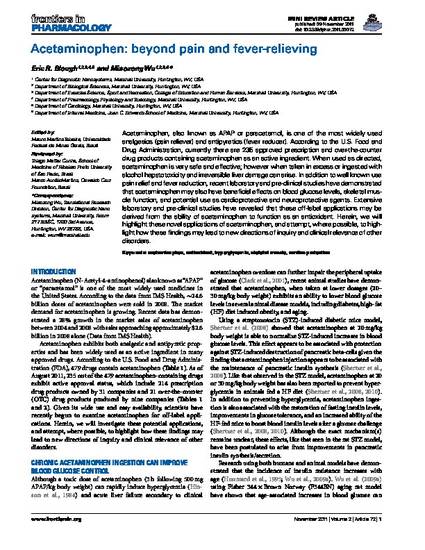
Acetaminophen, also known as APAP or paracetamol, is one of the most widely used analgesics (pain reliever) and antipyretics (fever reducer). According to the U.S. Food and Drug Administration, currently there are 235 approved prescription and over-the-counter drug products containing acetaminophen as an active ingredient. When used as directed, acetaminophen is very safe and effective; however when taken in excess or ingested with alcohol hepatotoxicity and irreversible liver damage can arise. In addition to well known use pain relief and fever reduction, recent laboratory and pre-clinical studies have demonstrated that acetaminophen may also have beneficial effects on blood glucose levels, skeletal muscle function, and potential use as cardioprotective and neuroprotective agents. Extensive laboratory and pre-clinical studies have revealed that these off-label applications may be derived from the ability of acetaminophen to function as an antioxidant. Herein, we will highlight these novel applications of acetaminophen, and attempt, where possible, to highlight how these findings may lead to new directions of inquiry and clinical relevance of other disorders.

Copyright: © 2011 Blough and Wu. This is an open-access article subject to a non-exclusive license between the authors and Frontiers Media SA, which permits use, distribution and reproduction in other forums, provided the original authors and source are credited and other Frontiers conditions are complied with.
Reprinted with permission.
http://www.frontiersin.org/Experimental_Pharmacology_and_Drug_Discovery/10.3389/fphar.2011.00072/abstract